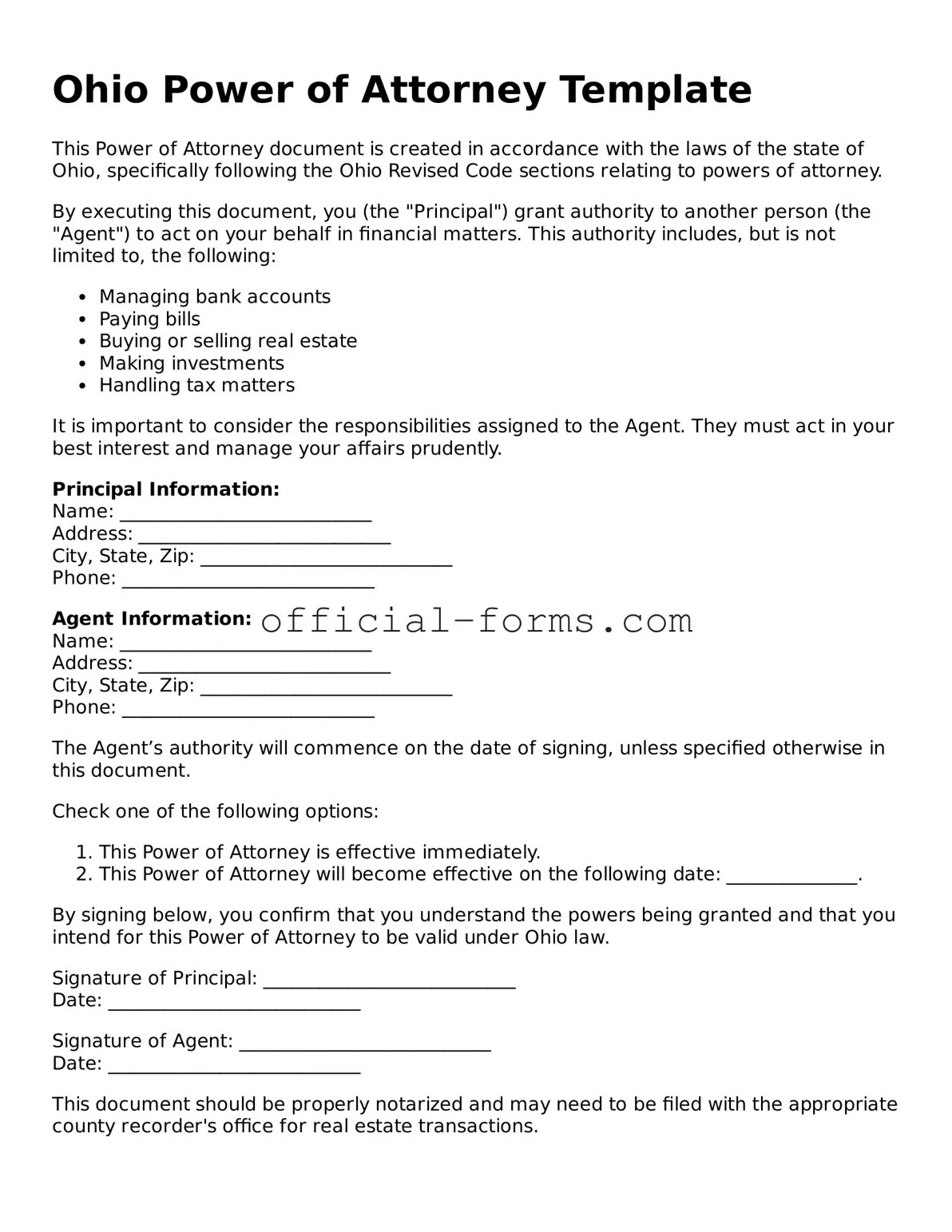Filling out the Ohio Power of Attorney form can be a straightforward process, but many individuals make common mistakes that can lead to complications. One frequent error is failing to specify the powers granted. The form allows for a broad range of authority, but if the specific powers are not clearly outlined, the agent may not be able to act effectively on behalf of the principal.
Another mistake involves not signing the document correctly. The Power of Attorney must be signed by the principal in the presence of a notary public. If the signature is missing or improperly executed, the document may be deemed invalid. It is crucial to ensure that all required signatures are present to avoid future disputes.
Some individuals neglect to update their Power of Attorney when circumstances change. Life events such as marriage, divorce, or the death of an agent can affect the validity of the document. Failing to revise the form can lead to confusion and unintended consequences, especially if the principal's wishes have changed.
Additionally, individuals often overlook the importance of choosing the right agent. Selecting someone who lacks the necessary skills or who may not act in the principal's best interest can have dire consequences. It is essential to choose an agent who is trustworthy and capable of handling the responsibilities that come with the role.
Another common error is not discussing the Power of Attorney with the chosen agent. Many people assume that their agent understands their wishes without a clear conversation. This lack of communication can lead to misunderstandings about the principal’s intentions and desired actions.
Finally, some individuals fail to provide copies of the completed Power of Attorney to relevant parties. Once the form is signed and notarized, it is important to distribute copies to the agent, financial institutions, and healthcare providers as needed. Without proper distribution, the agent may face challenges when trying to act on behalf of the principal.
